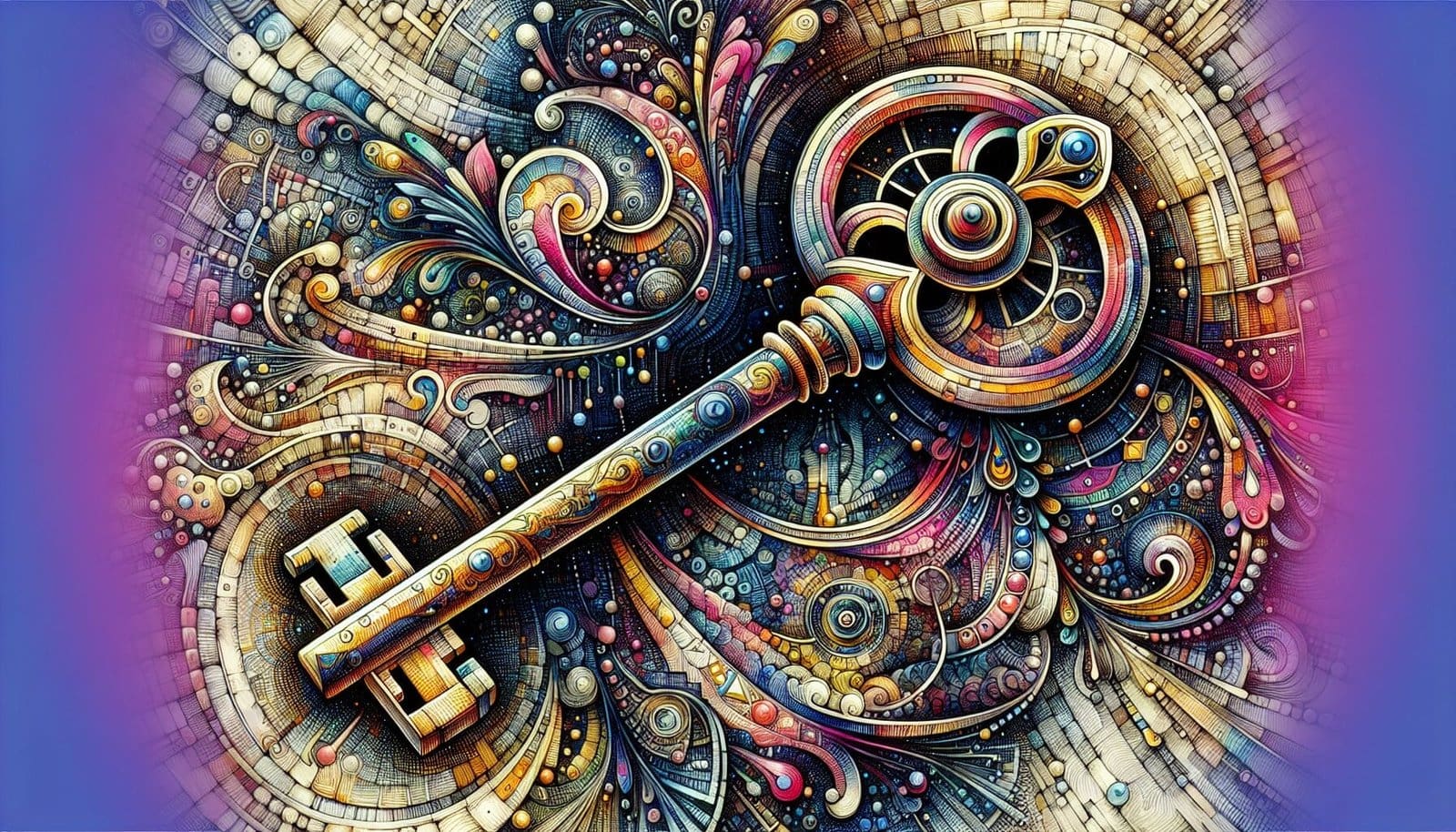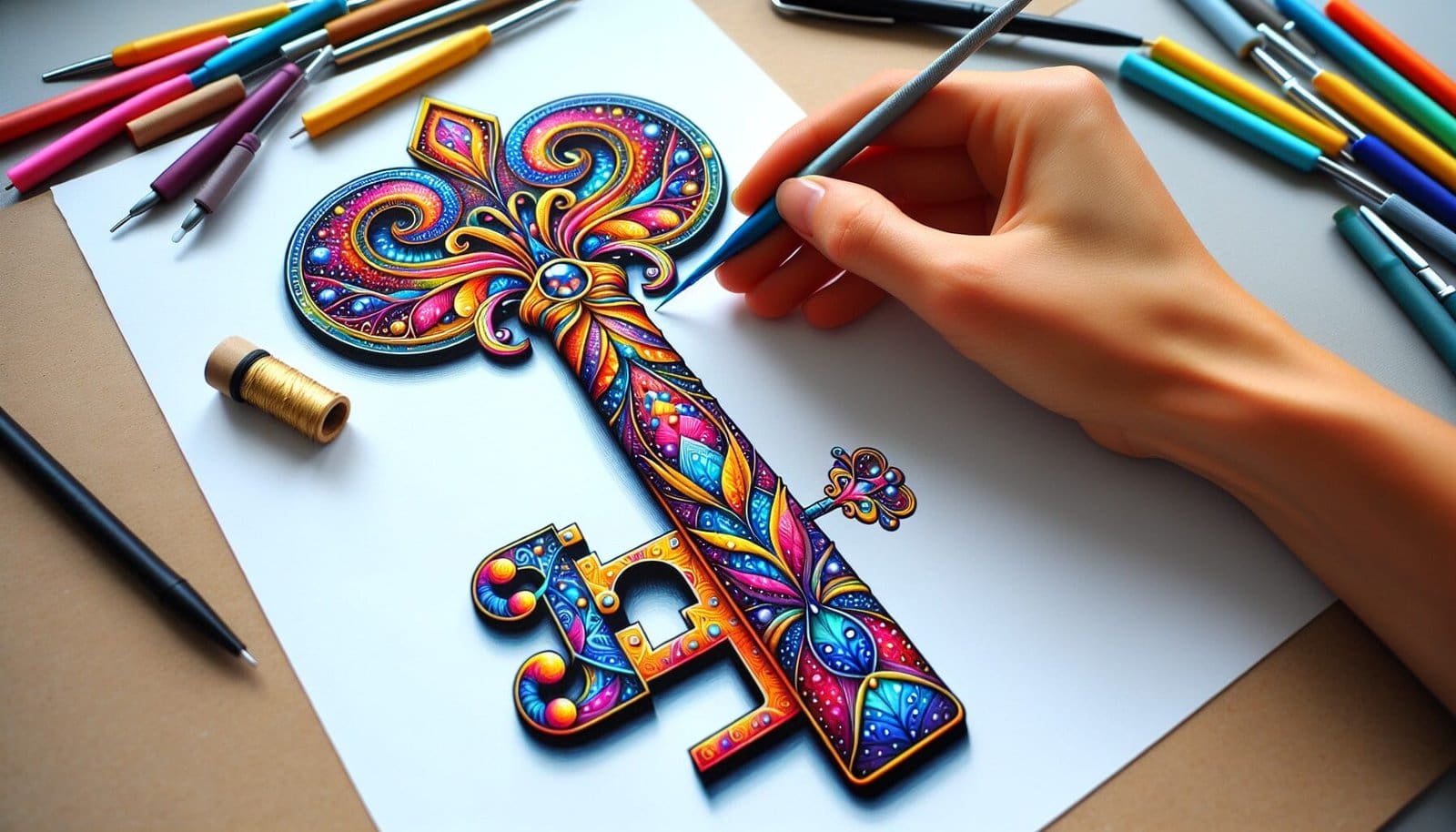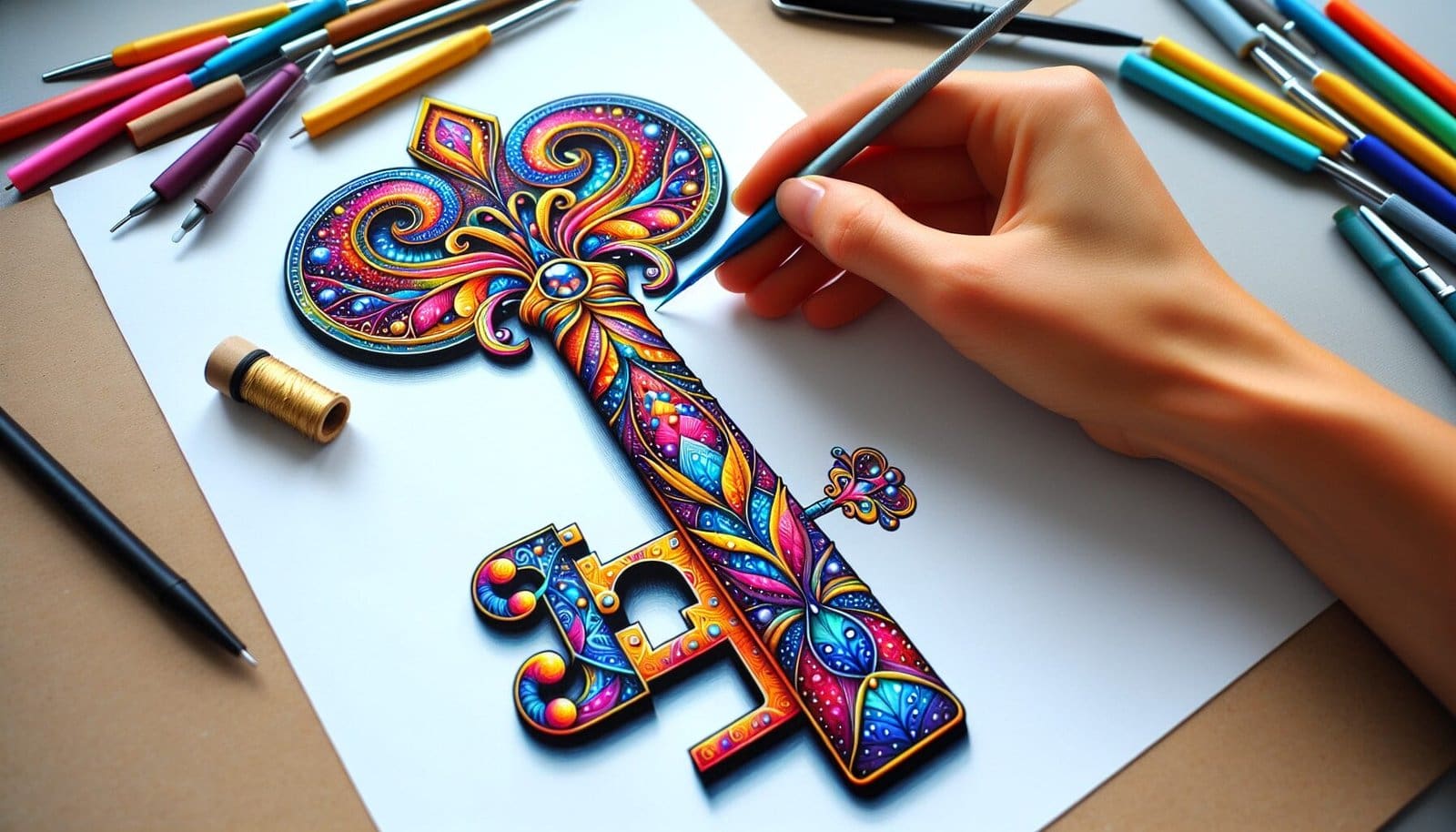Creativity is an innate ability within all of us, waiting to be unleashed and explored. In our quest for personal growth, we often overlook the power of creativity in transforming our lives and enhancing our sense of fulfillment. Thus, in this article, we embark on a journey to unlock the incredible potential of our creative minds, discovering how embracing creative pursuits can ignite our passion, boost our self-confidence, and open up endless possibilities for growth and self-expression. Get ready to embark on a transformative exploration that will inspire you to tap into your creative reserves and unleash your true potential.

Understanding creativity
Defining creativity
Creativity refers to the ability to generate new and valuable ideas, whether in artistic expression, problem-solving, or innovation. It is the process of combining different elements in unique and meaningful ways to create something original. Creativity goes beyond mere imagination; it involves bringing those imaginative ideas to life and making a tangible impact.
The importance of creativity
Creativity is not just limited to artists or inventors; it is an essential skill that benefits every aspect of our lives. It allows us to think outside the box, find innovative solutions to challenges, and adapt to an ever-changing world. Creativity nurtures personal growth, enhances problem-solving abilities, and fosters a sense of fulfillment and self-expression. It is a valuable asset in both personal and professional endeavors, driving progress and igniting positive change.
Types of creativity
Creativity can manifest in various forms. While artistic creativity may be the most commonly recognized form, there are other types such as scientific, technological, culinary, and entrepreneurial creativity. Each type has its unique characteristics and processes, but they all share the common thread of pushing boundaries and bringing something new into existence.
Common misconceptions about creativity
There are several misconceptions surrounding creativity that hinder its full potential. One common misconception is that creativity is a trait that some are born with, while others are not. However, creativity is not solely innate; it can be developed and cultivated through practice and mindset. Another misconception is that creativity only thrives in chaos or unstructured environments. On the contrary, creativity can also flourish within structured frameworks, as long as there is room for exploration and innovation.
Exploring the creative process
Stages of the creative process
The creative process typically consists of several stages: preparation, incubation, illumination, and verification. In the preparation stage, we gather information, conduct research, and immerse ourselves in the subject matter. The incubation stage involves allowing ideas to incubate in our subconscious mind, often during periods of relaxation or distraction. The illumination stage is when breakthrough ideas or insights suddenly come to us, seemingly out of nowhere. Finally, in the verification stage, we refine and evaluate our ideas, turning them into tangible creations.
Divergent and convergent thinking
Divergent thinking is a crucial aspect of the creative process. It involves generating multiple ideas, exploring possibilities, and thinking broadly to expand our options. On the other hand, convergent thinking is necessary to narrow down those ideas, analyze their feasibility, and select the most promising ones for further development. Both types of thinking are essential for a balanced and effective creative process.
Overcoming creative blocks
Creative blocks are common obstacles that can hinder our creative flow. To overcome them, it is crucial to identify the underlying causes of the block. It could be fear of failure, self-doubt, or perfectionism. By recognizing these barriers, we can develop strategies to address them, such as taking breaks, seeking inspiration from different sources, or engaging in activities that promote relaxation and reflection. Additionally, exploring new environments, collaborating with others, or revisiting past successful projects can provide fresh perspectives and stimulate creativity.
Embracing experimentation
Experimentation is a key component of the creative process. It involves exploring new ideas, techniques, and approaches without the fear of failure or judgment. By embracing experimentation, we invite curiosity and open-mindedness into our creative endeavors. Trying new things, taking calculated risks, and learning from both successes and failures broadens our creative horizons, leading to unique insights and breakthroughs.
Overcoming fear and self-doubt
Recognizing fear and self-doubt
Fear and self-doubt often emerge as internal barriers to unleashing our full creative potential. Recognizing and acknowledging these feelings is the first step towards overcoming them. Whether it is the fear of making mistakes, the fear of judgment, or the feeling of being inadequate, understanding these emotions allows us to address them head-on and move past them.
Challenging negative beliefs
Negative beliefs, such as the notion that we are not talented enough or that our ideas are not original, can significantly hinder our creative progress. Challenging these beliefs and reframing them in a positive light is crucial for overcoming self-doubt. By recognizing our strengths, celebrating small victories, and reframing failures as opportunities for growth, we can build a more positive and empowering mindset.
Building self-confidence
Self-confidence plays a pivotal role in nurturing creativity. Building self-confidence involves recognizing our unique skills and talents, valuing our ideas, and embracing our individuality. Engaging in activities that enhance self-esteem, seeking feedback from trusted sources, and celebrating personal achievements can boost our confidence and empower us to embrace new creative challenges.
Developing a growth mindset
A growth mindset is the belief that our abilities and intelligence can be developed through dedication and hard work. By cultivating a growth mindset, we view challenges as opportunities for growth rather than obstacles. We embrace learning, seek feedback, and persist through setbacks. This mindset allows us to approach creativity with an open attitude, constantly learning and evolving to unlock our full creative potential.
Cultivating a creative mindset
Embracing curiosity and openness
Curiosity is a driving force behind creativity. By nurturing our innate sense of wonder and exploration, we unlock new perspectives and insights. Embracing curiosity involves asking questions, seeking new experiences, and being open to varied perspectives. It allows us to break free from routine thinking and discover novel connections and ideas.
Practicing mindfulness and self-reflection
Mindfulness and self-reflection are powerful tools for cultivating a creative mindset. Taking time for mindfulness practices such as meditation or journaling allows us to quiet our minds, focus on the present moment, and tap into our inner creativity. Self-reflection enables us to understand our thoughts, emotions, and creative processes, leading to increased self-awareness and a deeper connection with our creative instincts.
Seeking inspiration from diverse sources
Inspiration can come from unexpected places. By actively seeking inspiration from diverse sources such as art, nature, literature, or conversations with different people, we expose ourselves to new ideas and perspectives. This cross-pollination of ideas stimulates creativity and enriches our own creative work.
Fostering a positive and supportive environment
Creating a positive and supportive environment is crucial for nurturing creativity. Surrounding ourselves with individuals who encourage and uplift us, whether they are family, friends, or fellow creatives, fosters a sense of belonging and provides valuable feedback and support. By creating a safe space for vulnerability and exploration, we feel more empowered to explore our creative potential.

Nurturing creativity through habits
Establishing a creative routine
A consistent creative routine establishes a sense of structure and discipline, helping us to prioritize our creative pursuits. By dedicating regular time to our creative endeavors, we develop a habit of making creativity a priority in our lives. Whether it is a daily sketching session, a weekly writing workshop, or setting aside time for brainstorming, a creative routine fosters consistency and momentum in our creative journey.
Setting goals and priorities
Setting clear goals and priorities is essential for nurturing creativity. By defining specific objectives and milestones, we create a roadmap for our creative endeavors. Goals provide focus, motivation, and a sense of direction. Breaking down larger goals into smaller, achievable tasks helps us stay on track and maintain a sense of progress, reinforcing our commitment to our creative pursuits.
Finding balance and avoiding burnout
While it is important to dedicate time and effort to our creative pursuits, it is equally vital to find balance and avoid burnout. Creativity thrives when we nourish other aspects of our lives, such as physical well-being, relationships, and leisure activities. Taking breaks, engaging in self-care, and setting boundaries allows us to recharge, gain fresh perspectives, and sustain our creative energy in the long run.
Embracing failure and learning from mistakes
Failure and mistakes are integral parts of the creative process. Embracing failure as a valuable learning experience rather than a setback is crucial for growth and progress. By reframing failure as an opportunity to learn and adapt, we foster resilience and persevere through challenges. Learning from mistakes and using those lessons to refine our creative work makes us more adaptable and strengthens our creative abilities.
Harnessing the power of imagination
Tapping into your imagination
Imagination is the wellspring of creativity. By tapping into our imagination, we unlock limitless possibilities and allow our minds to wander beyond conventional boundaries. Practicing activities that stimulate imagination, such as daydreaming, visualizing, or exploring different perspectives, enhances our capacity to think creatively and generates a wealth of ideas.
Engaging in imaginative exercises
Engaging in imaginative exercises can expand our creative thinking. Activities like brainstorming, mind mapping, or free writing stimulate our imagination and encourage the generation of a wide range of ideas. These exercises help us embrace divergent thinking and foster a habit of exploring unconventional and innovative solutions.
Creating mental imagery
Mental imagery involves vividly picturing scenarios, concepts, or outcomes in our minds. By harnessing the power of mental imagery, we can strengthen our connection between imagination and reality. Visualizing our creative goals, envisioning the successful completion of a project, or mentally rehearsing a presentation can enhance our confidence and make our creative aspirations feel more attainable.
Using visualization techniques
Visualization techniques involve creating physical representations or models of our ideas. From sketches and prototypes to storyboards and mood boards, visualizing our creative concepts helps us understand and refine our ideas. Visualization allows us to conceptualize our creations, explore different possibilities, and communicate our vision effectively.
Embracing creative challenges
Stepping out of your comfort zone
Stepping out of our comfort zones is essential for personal and creative growth. Embracing new challenges, whether it is trying a different artistic medium or tackling a complex problem, pushes us to explore uncharted territories and expand our skills. It encourages us to take risks, overcome fears, and embrace the unknown, leading to both personal and creative breakthroughs.
Taking risks and embracing uncertainty
Risk-taking is inherent to the creative process. Embracing risks means being willing to make mistakes, take unconventional approaches, and explore untested ideas. By embracing uncertainty and reframing failures as stepping stones to success, we create a fertile ground for creative growth. Taking calculated risks pushes our creative boundaries and opens doors to innovative solutions.
Collaborating with others
Collaboration is a powerful catalyst for creativity. Working with others exposes us to different perspectives, skills, and expertise, fostering a dynamic exchange of ideas and pushing our creative potential further. Collaboration encourages collective problem-solving, sparks inspiration, and allows for the blending of diverse talents and perspectives, leading to more innovative and impactful creations.
Finding motivation in challenges
Challenges serve as motivation for creative growth. Rather than seeing challenges as obstacles, we can view them as opportunities to test our creativity, refine our skills, and overcome limitations. By reframing challenges as exciting puzzles to be solved, we remain motivated and engaged in our creative pursuits. Challenges stretch our creative abilities and provide the impetus for innovation and personal growth.
Developing creative habits and rituals
Fostering a conducive workspace
Creating a workspace that supports and enhances our creative process is vital. Whether it is a dedicated studio, a cozy corner, or a clutter-free desk, our physical environment should inspire and stimulate creativity. Organizing materials, personalizing our space, and eliminating distractions can help us establish a harmonious and conducive workspace for our creative endeavors.
Implementing brainstorming techniques
Brainstorming is a powerful technique for generating ideas and exploring different possibilities. By implementing brainstorming techniques such as free association, mind mapping, or the 6-3-5 method, we can unlock the collective creative potential of a group or stimulate our individual ideation process. Brainstorming allows us to tap into the collective imagination and encourages the generation of a multitude of ideas.
Maintaining a creative journal
Keeping a creative journal is a valuable practice for nurturing our creative process. By documenting our ideas, observations, and inspirations, we create a repository of resources that we can refer back to for future projects. A creative journal also serves as a tool for self-reflection, allowing us to track our progress, insights, and growth as creatives.
Engaging in creative rituals
Incorporating creative rituals into our daily or weekly routines can inspire and energize our creative endeavors. Rituals can be personal and tailored to our unique preferences, such as starting the day with a cup of tea while contemplating creative ideas or ending each work session with a moment of reflection and gratitude. Engaging in creative rituals helps signal our brain that it is time for imaginative and productive work.
Continual learning and growth
Seeking feedback and constructive criticism
Seeking feedback from trusted individuals is invaluable for growth and improvement. Feedback provides fresh perspectives, highlights blind spots, and exposes us to new ideas. Constructive criticism, when received with an open mind, enables us to refine our work and hone our creative skills. Developing a receptive attitude towards feedback fosters a culture of continuous learning and improvement.
Learning from mentors and role models
Mentors and role models can provide guidance, inspiration, and insight into the creative process. Learning from the experiences and wisdom of those who have paved the way in our respective fields gives us valuable insights and shortcuts to success. By studying the work and mindset of our role models, we can learn from their successes and failures, and apply those lessons to our own creative journeys.
Expanding your knowledge and skills
Continual learning is vital for creativity. Expanding our knowledge and skills in our chosen field or exploring new disciplines widens our creative toolkit and enriches our creative work. By immersing ourselves in learning opportunities, such as workshops, courses, or reading books and articles, we stay on the cutting edge of our field and unlock new creative possibilities.
Embracing a lifelong learning mindset
A lifelong learning mindset is the belief that learning is a continuous and lifelong journey. By embracing this mindset, we remain curious, open-minded, and adaptable to new ideas and experiences. It fuels our creative growth and allows us to evolve and reinvent ourselves as creatives. Embracing a lifelong learning mindset ensures that creativity continues to flourish throughout our lives.
Practical strategies for unlocking creativity
Practicing divergent thinking
Divergent thinking involves generating a multitude of ideas without judgment or limitation. By practicing divergent thinking, we challenge ourselves to think beyond the obvious, explore unconventional possibilities, and discover unexpected connections. Engaging in activities such as brainstorming, ideation exercises, or exploring unrelated disciplines promotes divergent thinking and stimulates creativity.
Engaging in creative exercises and challenges
Creative exercises and challenges provide opportunities to stretch our creative muscles and explore new techniques or concepts. Whether it is completing a daily drawing challenge, participating in a creativity workshop, or attempting a new artistic medium, creative exercises foster experimentation, inspire innovation, and allow us to refine our artistic skills.
Improving problem-solving skills
Problem-solving is at the core of creativity. Improving our problem-solving skills equips us with the tools to overcome obstacles and navigate the creative process effectively. By practicing critical thinking, exploring different approaches, and embracing diverse perspectives, we enhance our problem-solving abilities and unlock innovative solutions.
Seeking inspiration from different disciplines
Inspiration can be found in unexpected places. Seeking inspiration from different disciplines, such as science, philosophy, or music, broadens our creative horizons and encourages the integration of diverse influences into our work. By exploring unfamiliar territories and drawing connections between seemingly unrelated fields, we infuse our creative process with fresh ideas and perspectives.
In conclusion, unlocking our creative potential requires a comprehensive understanding of the creative process, the ability to overcome internal barriers, and the cultivation of a creative mindset through habits and continual learning. By embracing curiosity, challenging negative beliefs, and embracing uncertainty, we can unleash our creativity and achieve personal and professional fulfillment. With practical strategies and a supportive environment, we have the power to tap into our imagination, overcome challenges, and harness our creative abilities to make a positive impact on the world.








